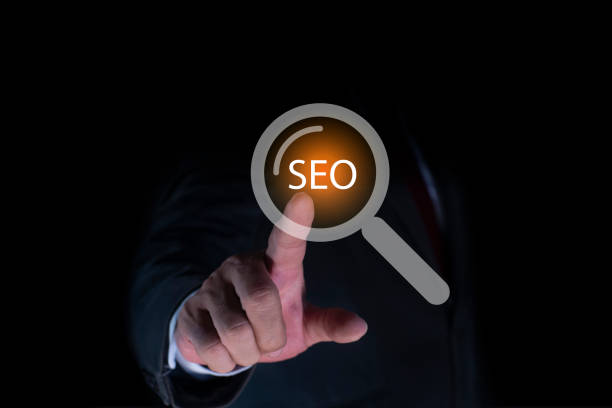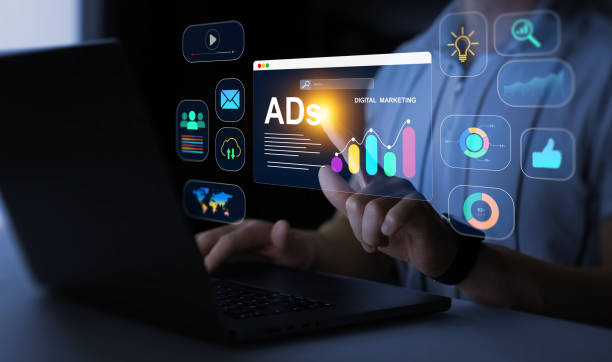The Comprehensive On-Page SEO Guide for 1403 (2024-2025) – Practical Techniques and Strategies
What is Internal SEO and Why Does It Matter? Click here to preview your posts with PRO themes ››Keyword Research – The Beating Heart of Internal SEO Keyword research is...
- رسا وب آفرین
- ربات هوش مصنوعی
- Everything About AI Robots: A Comprehensive and Practical Guide

فهرست مطالب
What is Internal SEO and Why Does It Matter?
What is Internal SEO and Why Does It Matter?
#Internal SEO or On-Page SEO is a set of actions taken within a website to improve the site’s ranking in search results.
These actions include optimizing content, site structure, HTML tags, and other internal elements of the site.
The importance of internal SEO stems from the fact that it helps search engines better understand the content of the site and show it to relevant users.
In fact, SEO is the foundation for success in digital marketing.
If the internal SEO of a website is done correctly, the likelihood of being seen and attracting organic traffic increases.
For example, if a user searches for “buy laptop” on Google, a website with stronger internal SEO is likely to appear in higher rankings and have a better chance of attracting this user.
The importance of internal SEO becomes even more apparent when we know that search engine algorithms are constantly changing and their focus is on providing the best and most relevant results to users.
Internal SEO helps businesses adapt to these changes and continue to be seen in search results.
Internal SEO also improves user experience.
A website with a well-organized structure and optimized content keeps users satisfied and increases the likelihood of them returning to the site.
So internal SEO is important not only for search engines but also for users.
Are you tired of your company’s website failing to meet your expectations? With Rasaweb, design a professional website that showcases the true face of your business.
✅ Increase new customer acquisition and sales leads
✅ Increase your brand’s credibility and trust with your audience
⚡ Get a free website design consultation!
Keyword Research – The Beating Heart of Internal SEO
Click here to preview your posts with PRO themes ››
Keyword Research – The Beating Heart of Internal SEO
Keyword research is the process of identifying the words and phrases that users use to search on search engines.
These keywords form the basis of an internal SEO strategy.
Without keyword research, internal SEO efforts will be aimless and fruitless.
To start keyword research, you should first create a list of keywords related to your field of work using various tools such as Google Keyword Planner, Ahrefs, or Semrush.
Then, prioritize these keywords based on search volume, competition, and relevance to your site’s content.
Long-Tail Keywords are also very important.
These words are longer and more specific phrases that users use when searching for more detailed information.
For example, instead of the keyword “shoe”, use the phrase “buy men’s athletic shoes for running”.
Using keywords in page titles, meta descriptions, H1 to H6 tags, and main content, helps search engines better understand the topic of the page.
However, it should be noted that overuse of keywords (Keyword Stuffing) can have the opposite effect and cause the site to be penalized by search engines.
Effective internal SEO requires natural and relevant use of keywords throughout the site’s content.
Internal SEO helps you choose the right keywords to improve internal SEO.
Optimizing Title and Meta Descriptions – Attracting More Clicks
Optimizing Title and Meta Descriptions – Attracting More Clicks
The page title ( <title>) and meta description (Meta Description) are two important elements in internal SEO that are displayed in search results.
These two elements provide an opportunity to attract more clicks from users.
The page title should be short, attractive, and relevant to the page’s content.
Using the main keyword in the page title helps improve the site’s ranking in search results.
The appropriate length for the page title is about 50 to 60 characters.
The meta description is a summary of the page’s content that is displayed below the page title in search results.
These descriptions should be attractive and persuasive to encourage users to click on the site’s link.
The appropriate length for the meta description is about 150 to 160 characters.
Successful internal SEO requires attention to these details.
Both the title and meta descriptions should be written for users, not just for search engines.
Using phrases like “Buy Now” or “Learn More” can increase click-through rates.
Also, it is important that the title and meta descriptions are unique for each page of the site.
Using duplicate titles and meta descriptions can reduce the site’s ranking in search results.
Internal SEO in this section focuses on attracting users.
| Element | Description | Appropriate Length |
|---|---|---|
| Page Title | The page title that is displayed in search results. | 50-60 characters |
| Meta Description | A summary of the page’s content that is displayed below the page title. | 150-160 characters |
Optimizing Page Content – Producing Valuable and Engaging Content
Optimizing Page Content – Producing Valuable and Engaging Content
Page content is the most important factor in internal SEO.
High-quality, valuable, and engaging content not only keeps users on the site, but also improves the site’s ranking in search results.
Content should be relevant to the target keywords and answer users’ questions and needs.
Content length is also important.
Longer and more comprehensive content usually achieves a better ranking in search results.
However, it should be noted that the content should not be boring and repetitive.
Using images, videos, and other multimedia elements can increase the attractiveness of the content.
Internal SEO requires the production of original and unique content.
Copying content from other sites can result in the site being penalized by search engines.
Internal SEO and high-quality content production are two sides of the same coin.
Content should be organized in a way that is easy to read and understand.
Using subheadings, short paragraphs, and lists helps readers easily find the information they are looking for.
Internal linking to other pages of the site also helps improve the site structure and increase the site’s ranking in search results.
Internal SEO is an ongoing process and the site’s content should be updated regularly.
Does your current online store design cause you to lose customers and sales?
Rasaweb is your solution with modern and user-friendly online store designs!
✅ Significant increase in conversion rates and sales
✅ Creating strong branding and gaining customer trust
⚡ Get a free online store design consultation from Rasaweb!
Optimizing Images – Increasing Speed and Improving SEO
Optimizing Images – Increasing Speed and Improving SEO
Images play an important role in the attractiveness and efficiency of a website, but if they are not properly optimized, they can slow down the site and harm SEO.
Image optimization includes reducing file size, using the appropriate format, and adding Alt Text.
High image size is one of the main reasons for slowing down the site.
Using image compression tools can reduce the size of images without reducing quality.
JPEG, PNG, and WebP formats are among the common formats for web images.
JPEG format is suitable for images with many colors, while PNG format is more suitable for images with text and simple graphics.
WebP format is a newer format that has both high quality and small size.
Alt Text is the text that is displayed instead of the image if it is not displayed.
This text should be descriptive and relevant to the image and contain the target keyword.
Image internal SEO is an important aspect of the site’s overall internal SEO.
Internal SEO pays special attention to optimizing Alt Text for images.
Using a suitable file name is also important.
The file name should be descriptive and relevant to the image.
Instead of using incomprehensible file names like IMG123.jpg, use descriptive file names like buy-cheap-laptop.jpg.
Optimizing images not only speeds up the site, but also helps search engines better understand the images and display them in search results.
With internal SEO with optimized images, you will have a better ranking in search results.
Optimizing URL Structure – Creating Readable and Relevant URLs
Optimizing URL Structure – Creating Readable and Relevant URLs
URL structure plays an important role in internal SEO and user experience.
Readable and relevant URLs help users and search engines better understand the topic of the page.
The URL should be short, descriptive, and contain the main keyword.
Avoid using special characters, numbers, and uppercase letters in the URL.
Instead of using incomprehensible URLs like example.com/page?id=123, use descriptive URLs like example.com/buy-laptop.
Using a hyphen (-) instead of a space helps separate words in the URL and increases its readability.
Internal SEO pays special attention to the URL structure.
Internal SEO and optimized URLs are directly related.
The URL structure should be logical and hierarchical.
URLs related to a topic should be in the same category.
This helps users easily navigate your site and find the information they are looking for.
For example, if you have an online store, the URLs of the products should be in the form example.com/category/product-name.
Using Canonical URLs is essential to prevent the creation of duplicate content.
If a page of your site is accessible with several different URLs, you should use the rel=”canonical” tag to specify the main URL.
With optimized URLs, you will gain a better ranking with internal SEO.
Internal Linking – Creating a Strong Structure for the Site
Internal Linking – Creating a Strong Structure for the Site
Internal linking is the process of linking from one page of the site to other pages of the same site.
This helps search engines better understand the site structure and identify the more important pages.
Also, internal linking helps users easily navigate your site and find the information they are looking for.
Links should be relevant to the content of the page and link to relevant pages.
Use descriptive and relevant Anchor Text for the destination page.
Instead of using general link texts like “Click Here”, use descriptive link texts like “Laptop Buying Guide”.
The number of internal links on each page should be logical and balanced.
Excessive linking can confuse users and reduce the site’s ranking in search results.
Internal SEO requires a strong internal linking strategy.
Internal SEO and internal linking complement each other.
Pages that are more important to you should receive more internal links.
This shows search engines that these pages are more important and should be displayed in higher rankings.
Internal linking helps improve the site’s ranking in search results, but more importantly, it helps improve the user experience.
A site with a strong internal linking structure keeps users more satisfied and increases the likelihood of them returning to the site.
Implement internal SEO in the best possible way.
| Link Type | Description | Example |
|---|---|---|
| Internal Link | Link from one page to another on the same site. | Page Two |
| External Link | Link from your site to another site. | Example |
Site Speed – A Critical Factor in SEO and User Experience
Site Speed – A Critical Factor in SEO and User Experience
Site speed is one of the important factors in SEO and user experience.
A site with high speed keeps users more satisfied and increases the likelihood of them returning to the site.
Also, site speed is one of Google’s ranking factors.
Sites that have higher speeds usually achieve a better ranking in search results.
To improve site speed, you can use various methods, including optimizing images, using a CDN (Content Delivery Network), enabling Gzip compression, and reducing the size of HTML, CSS, and JavaScript files.
Using site speed testing tools such as Google PageSpeed Insights and GTmetrix helps you identify and fix your site’s speed issues.
Internal SEO should pay attention to this.
Successful internal SEO requires high site speed.
Internal SEO and site speed are directly related.
Choosing a suitable hosting also plays an important role in site speed.
High-quality hostings usually have more speed and stability.
In addition, using a light and optimized template can help improve site speed.
Heavy templates full of unnecessary features can slow down the site.
Improving site speed is an ongoing process and should be regularly reviewed and updated.
Guarantee your site’s internal SEO with high speed.
Does your current online store design not deliver the expected sales?
Rasaweb specializes in professional online store design!
✅ An attractive and user-friendly site with the aim of increasing sales
✅ High speed and security for an ideal shopping experience⚡ Get a free online store design consultation with Rasaweb!
Responsiveness – Designing a Site for Different Devices
Responsiveness – Designing a Site for Different Devices
Responsiveness means designing a site in such a way that it is displayed correctly on different devices such as computers, tablets, and mobile phones.
Given the increasing use of mobile phones to search the internet, site responsiveness is of particular importance today.
Google prioritizes responsive sites in search results.
If your site is not responsive, you may lose your ranking in search results.
Internal SEO requires site responsiveness.
Internal SEO and responsive design are necessary and complementary.
To ensure your site is responsive, you can use Google’s Mobile-Friendly Test tool.
This tool shows you whether your site is optimized for mobile or not.
Using CSS frameworks such as Bootstrap and Foundation helps you easily design responsive sites.
In addition to being responsive, site speed on mobile is also important.
Mobile users expect sites to load quickly.
Optimizing images and using CDN can help improve site speed on mobile.
Suitable internal SEO is a site with a responsive design and high speed.
Optimizing for Mobile – Great User Experience on Mobile
Optimizing for Mobile – Great User Experience on Mobile
Mobile optimization goes beyond just being responsive.
This means ensuring that your website provides a great user experience for mobile visitors.
This includes things like fast loading speed, easy-to-navigate design, and making sure text and buttons are readable on smaller screens.
Since most searches are now done on mobile devices, mobile optimization is very important for internal SEO SEO.
In fact, Google uses a mobile-first index, meaning that the mobile version of your website is the main version used for ranking.
To ensure that your website is optimized for mobile, make sure it has a responsive design, fast loading speed, and smooth user experience.
Using AMP (Accelerated Mobile Pages) can also help improve the loading speed of your website on mobile devices.
Also make sure that your website is optimized for touch, meaning that the buttons and links are large enough to be easily clicked.
Internal SEO and mobile should not be separated.
Frequently Asked Questions
| Question | Answer |
|---|---|
| What is Internal SEO (On-Page SEO)? | It refers to a set of actions taken within the website to improve ranking in search engines. |
| Why is Internal SEO important? | Because it helps search engines better understand the content and structure of your site and improves user experience. |
| What are the most important elements of Internal SEO? | Title and meta descriptions, keywords, URL structure, quality content, image optimization, internal linking, and site speed. |
| How to optimize Title Tag and Meta Description? | The title should include the main keyword and be attractive, and the meta description should be a persuasive summary of the content with relevant keywords. |
| What is the role of keywords in Internal SEO? | Keywords let search engines know what the page content is about and should be used naturally and intelligently in the text. |
| How is image optimization done for Internal SEO? | By compressing the size, using a descriptive file name and filling the Alt tag with related descriptions and keywords. |
| What is Internal Linking and what is its use? | It is connecting different pages of the site to each other. This helps distribute Page Authority and improve search engine crawling. |
| What is the importance of site loading speed in Internal SEO? | High speed improves user experience and is an important ranking factor for search engines like Google. |
| How does site Mobile-Friendliness affect Internal SEO? | Given the increase in mobile users, being responsive is essential to provide a good user experience on all devices and the priority of Google’s mobile index. |
| What are the important factors related to content in Internal SEO? | Originality, quality, comprehensiveness, readability, proper use of headings (H1, H2,…) and regular content updates. |
And other services of Rasa Web advertising agency in the field of advertising
Smart website development: A professional solution for online growth with a focus on SEO-driven content strategy.
Smart advertising campaign: A combination of creativity and technology to increase click-through rates through custom programming.
Smart sales automation: A new service to increase customer acquisition through precise audience targeting.
Smart customer journey map: An effective tool to increase site visits by using real data.
Smart data analysis: Designed for businesses that are looking to manage campaigns through Google Ads management.
And more than hundreds of other services in the field of internet advertising, advertising consulting and organizational solutions
Internet Advertising | Advertising Strategy | Advertorial
Resources
Comprehensive guide to Internal SEO from Zoomit
,What is Internal SEO (On Page SEO)? Complete Internal SEO Training in 2024
,What is Internal SEO or On-Page SEO?
,Internal SEO video tutorial from Aparat
? Build the future of your online business with Rasa Web Digital Marketing Agency. We help you on the path to growth and success by providing specialized services including SEO-optimized website design, search engine optimization (SEO), and professional social media management. Contact us today and transform your business!
📍 Tehran, Mirdamad Street, next to the Central Bank, South Kazerun Alley, Ramin Alley No. 6
دیگر هیچ مقالهای را از دست ندهید
محتوای کاملاً انتخاب شده، مطالعات موردی، بهروزرسانیهای بیشتر.
محبوب ترین مقالات
هوش مصنوعی در تلفن همراه دنیای جدیدی را می گشاید اپلیکیشن هوش مصنوعی موبایل طیف گسترده...

What is off-page SEO and why is it important? Off-page SEO includes a set of strategies...

Introduction to the Concept of Artificial Intelligence and Income Earning Opportunities To succeed in the field...
آمادهاید کسبوکارتان را دیجیتالی رشد دهید؟
از طراحی سایت حرفهای گرفته تا کمپینهای هدفمند گوگل ادز و ارسال نوتیفیکیشن هوشمند؛ ما اینجاییم تا در مسیر رشد دیجیتال، همراه شما باشیم. همین حالا با ما تماس بگیرید یا یک مشاوره رایگان رزرو کنید.










